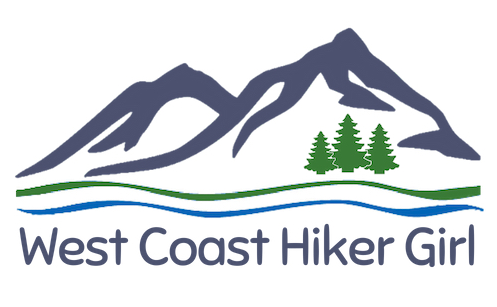In honour of the U.S. National Park Service’s 100th Anniversary, I’m introducing a feature called “Find Your Park,” named after the popular hashtag the NPS has been using this year to promote the parks. Each unique post will feature one of the U.S. National Parks that I have had the chance to visit. 
Park: Olympic National Park
Location: Olympic Peninsula, Washington
Established: June 1938
Size: 922,651 acres
Annual visitors: 3.2 million
Entrance fee: $25/vehicle/week
Times visited: 2
I can see the mountains of Olympic National Park from my apartment windows. Most of the time they are just a faint outline, but some bright winter days they show up very clearly in all their snow-capped beauty. When I lived in Victoria, the Olympics were even closer. Though I didn’t necessarily see them from where I lived, I’d catch glimpses of them as I went about my days.
Even though I’ve lived near enough Olympic National Park to see it regularly, I’ve rarely had the chance to go there. Because of it’s location on the Olympic Peninsula, it is a combination of long hours of driving and time on a ferry to get there.
Even still, I have had the chance to visit Olympic National Park on two separate occasions. The park is huge, covering nearly 1500 square miles (or nearly 4000 square km.) It encompasses three distinct ecosystems: the alpine zone, the rainforest, and the coastline.
My first visit to the park was a sunny, hot weekend in early July of 2011. It was a spontaneously planned trip and gave us just a taste of what the Park has to offer. We stayed at Elwha Campground, down the Elwha River from the Elwha and Glines Canyon Dams. We learned over our weekend that the dams were due to be removed in a massive river restoration project, starting that fall. As such, the Elwha Campground would be closing that fall, and still remains closed five years later due to the flooding caused by the dam removals.

The lake created by the Glines Canyon Dam. This view looks a lot different now!
Our goal for the weekend was to relax, and the best way to do so in the wilds of the Pacific Northwest is to find a hot spring! The Olympic Hot Springs were accessed by an easy 2.5 mile trail, mostly along an old roadbed. Unfortunately, since the removal of the dams on the Elwha River, the trailhead access road has been closed. We were very lucky to enjoy such a gem!
Our second day in the park we drove up to Hurricane Ridge. We did the short hike to Hurricane Hill and enjoyed the amazing 360 views around us.

Deer grazing at Hurricane Ridge

Wildflowers blooming in the meadows on Hurricane Ridge
My second trip to Olympic National Park was almost exactly one year later, in July of 2012. We took the Whidbey Island ferry across to Port Townsend and then spent a night camping at Dungeness Spit before venturing to the western edge of the park.
We had planned a two-night backpacking trip with friends to Toleak Point along the South Coast Wilderness Trail. It was an easy start, hiking 1.5 miles from the trailhead to Third Beach. After that the trail got a bit more rugged, hiking along the sandy beach for a bit and then going overland through many muddy sections. By the time we made it to the campground at Toleak Point we were quite worn out and ready to relax, instead of continuing further south.
It turned out to be the right choice. It was a very wild spot, with eagles and ravens nesting overhead, seals off shore, and amazing tide pools to explore at low tide.

Awesome rock formations and beautiful sunset light

Exploring the tide pools
Before heading home, we spent one day visiting the Hoh Rain Forest. Rather understandably, it poured the whole time we were there. But it was pretty fantastic to see the giant Big Leaf Maples, draped in moss and dripping with moisture.
Conclusion
Olympic National Park is best described in three words: wild, remote, and rugged. There are three separate ecosystems to discover, and three unique areas of the park to explore. Because of it’s isolated location, visiting the park is best done over multiple days, and even then you’ll only be getting a brief taste. There are good front country activities for families, such as visiting Hurricane Ridge, walking through the Hoh Rain Forest, or enjoying one of the many beaches of the Kalaloch area. There are also endless backpacking options through the mountains or along the coast. Be prepared for all sorts of weather and plan to make the best of the rainier days.
